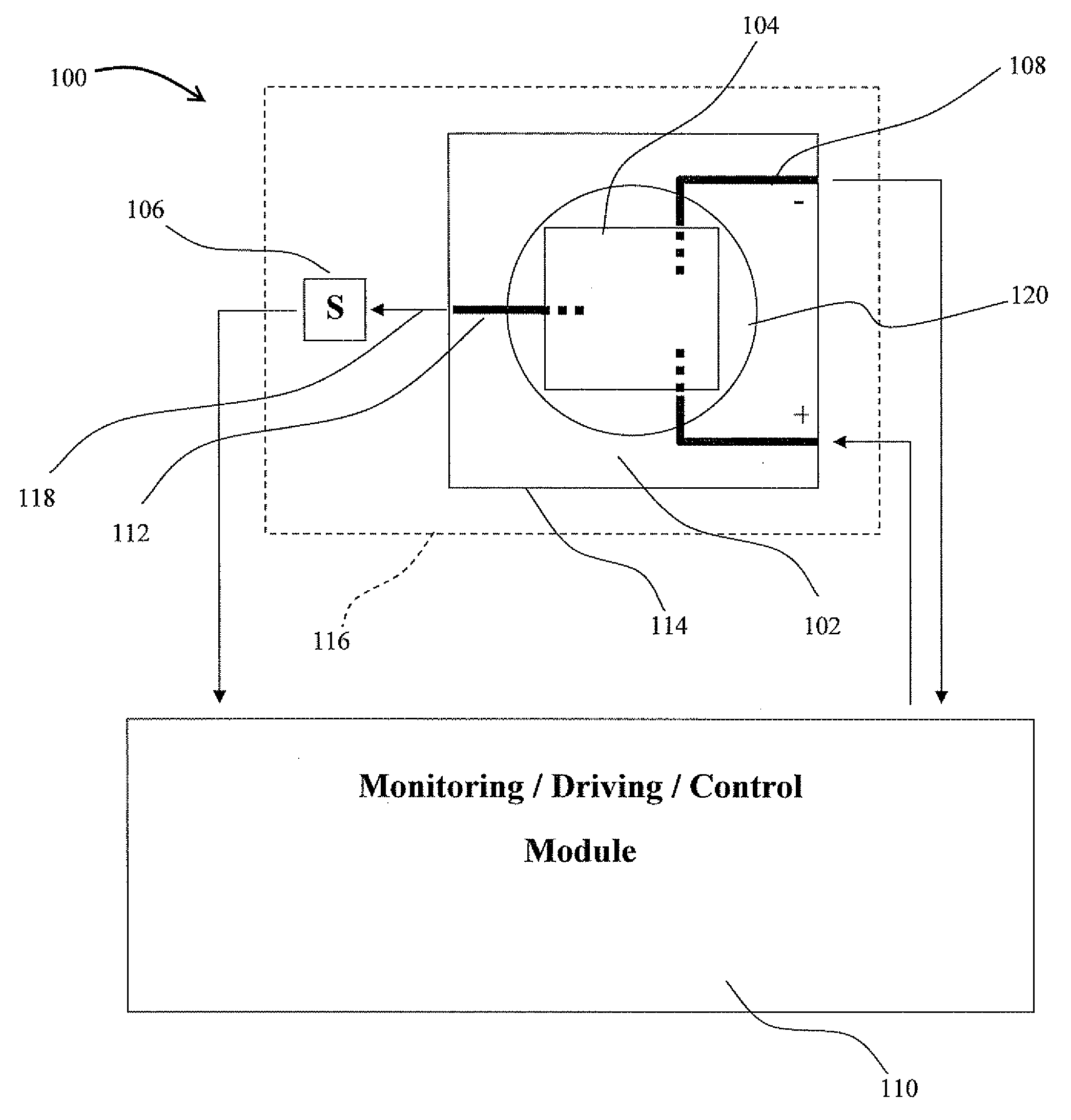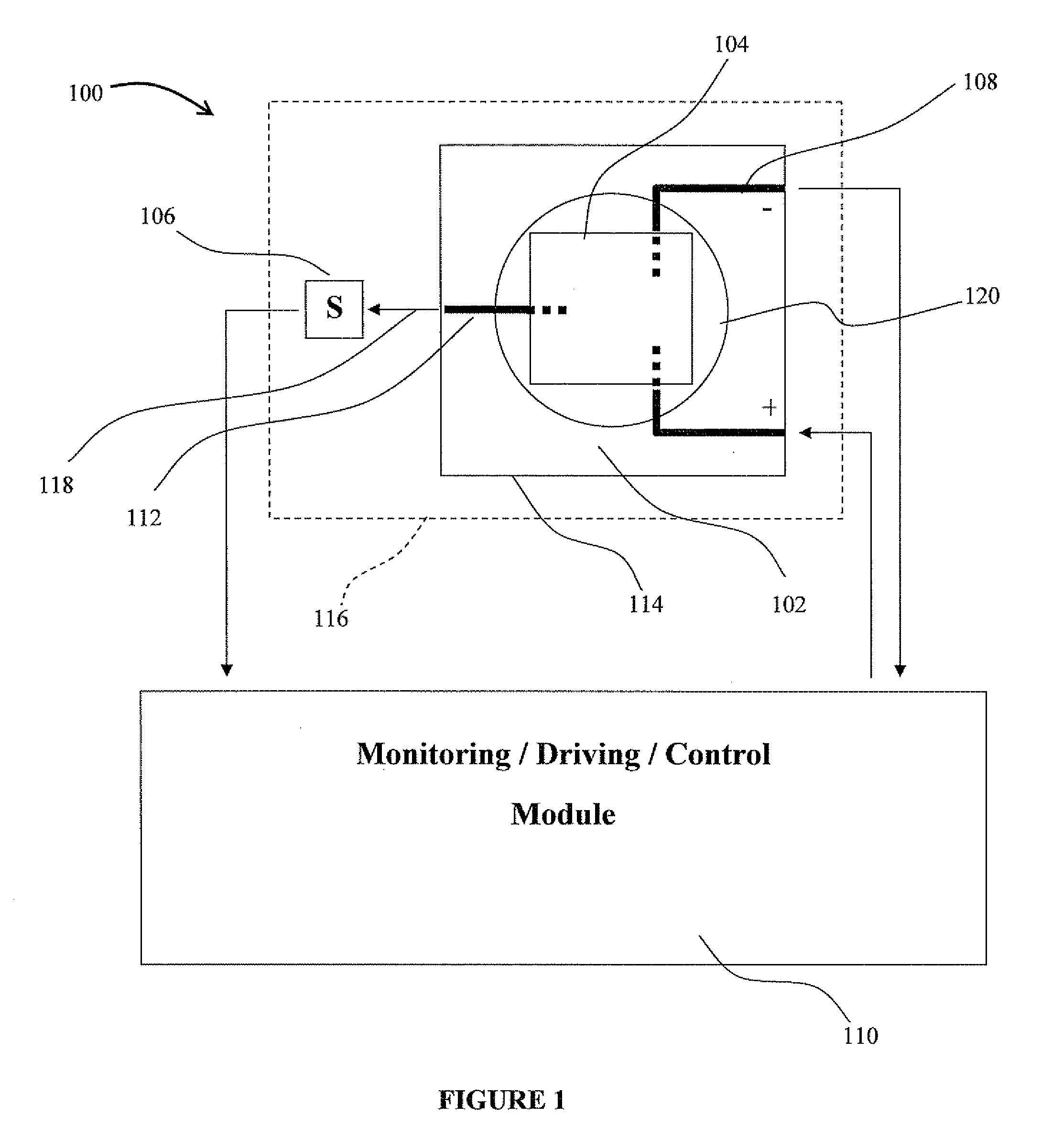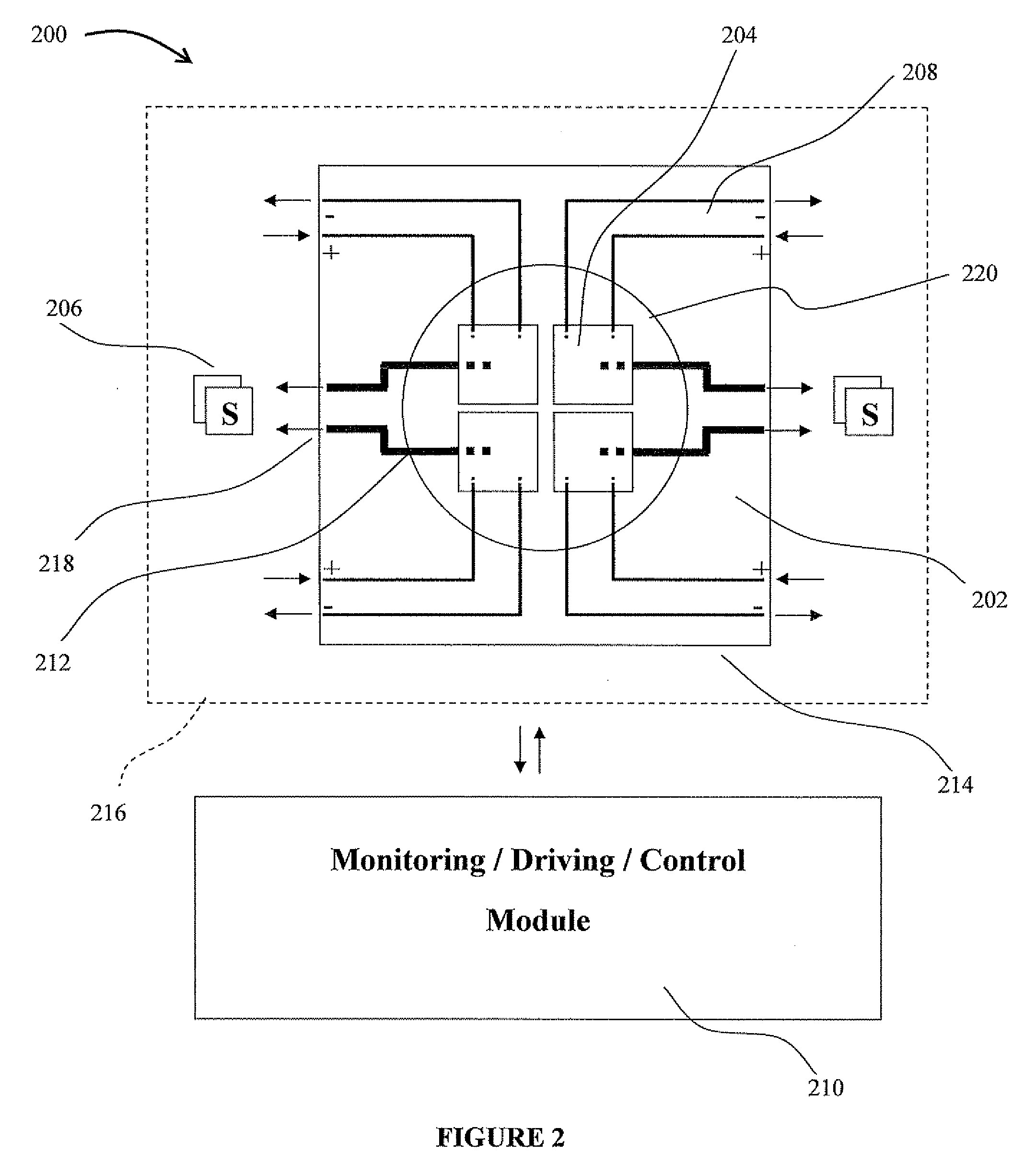Light-Emitting Element Light Source and Temperature Management System Therefor
a technology of light-emitting elements and temperature management systems, applied in the field of light-emitting elements, can solve the problems of reducing the life and/or operating efficiency of leds, affecting the operation efficiency of light-emitting elements, and unable to monitor the operating temperature of light-emitting elements
- Summary
- Abstract
- Description
- Claims
- Application Information
AI Technical Summary
Benefits of technology
Problems solved by technology
Method used
Image
Examples
example 1
[0065]Referring now to FIGS. 4 and 5, a light source, generally referred to using the numeral 400, and in accordance with one embodiment of the present invention, will now be described. The light source 400 generally comprises a substrate 402 and four light-emitting elements, as in elements 404, mounted thereto. The light source 400 further comprises four temperature sensing elements, as in elements 406, for sensing an operating temperature of each of the light-emitting elements 404.
[0066]In particular, the top face of the substrate 402 comprises a segment (not shown) of drive circuitry 408 operatively coupled to the light-emitting elements 404 and leading to a light source driving mechanism (not shown) configured to impart a drive current to the light-emitting elements 404. The top face of the substrate 402 further comprises thermal probes 412 (FIG. 5) thermally coupling each light-emitting element 404 to a respective temperature sensing element 406. A monitoring, driving and contr...
example 2
[0074]Referring now to FIGS. 6 and 7, a light source, generally referred to using the numeral 500, and in accordance with one embodiment of the present invention, will now be described. The light source 500 generally comprises a substrate 502 and four light-emitting elements, as in elements 504, mounted thereto. The light source 500 further comprises four temperature sensing elements, as in elements 506, for sensing an operating temperature of each of the light-emitting elements 504.
[0075]In particular, the top face of the substrate 502 comprises a segment (not shown) of drive circuitry 508 operatively coupled to the light-emitting elements 504 and leading to a light source driving mechanism (not shown) configured to impart a drive current to the light-emitting elements 504. The top face of the substrate 502 further comprises thermal probes 512 thermally coupling each light-emitting element 504 to a respective temperature sensing element 506. A monitoring, driving and control module...
example 3
[0084]FIGS. 8 and 9 provide different mounting structures 616 and 716 for use in mounting respective light-emitting element packages 614 and 714 similar to those described hereinabove with reference to FIGS. 4 to 7. In the example of FIG. 8, the slots 626 are generally arcuate in nature defining a substantially oblong flexible region 628. In the example of FIG. 9, the slots 726 are L-shaped, defining as in FIG. 6, a square or rectangular flexible region 728. Other slot shapes and configurations providing similar advantages should be apparent to the person skilled in the art and are thus not meant to depart from the general scope and nature of the present disclosure.
PUM
 Login to View More
Login to View More Abstract
Description
Claims
Application Information
 Login to View More
Login to View More - R&D
- Intellectual Property
- Life Sciences
- Materials
- Tech Scout
- Unparalleled Data Quality
- Higher Quality Content
- 60% Fewer Hallucinations
Browse by: Latest US Patents, China's latest patents, Technical Efficacy Thesaurus, Application Domain, Technology Topic, Popular Technical Reports.
© 2025 PatSnap. All rights reserved.Legal|Privacy policy|Modern Slavery Act Transparency Statement|Sitemap|About US| Contact US: help@patsnap.com



